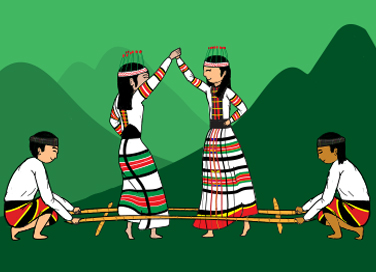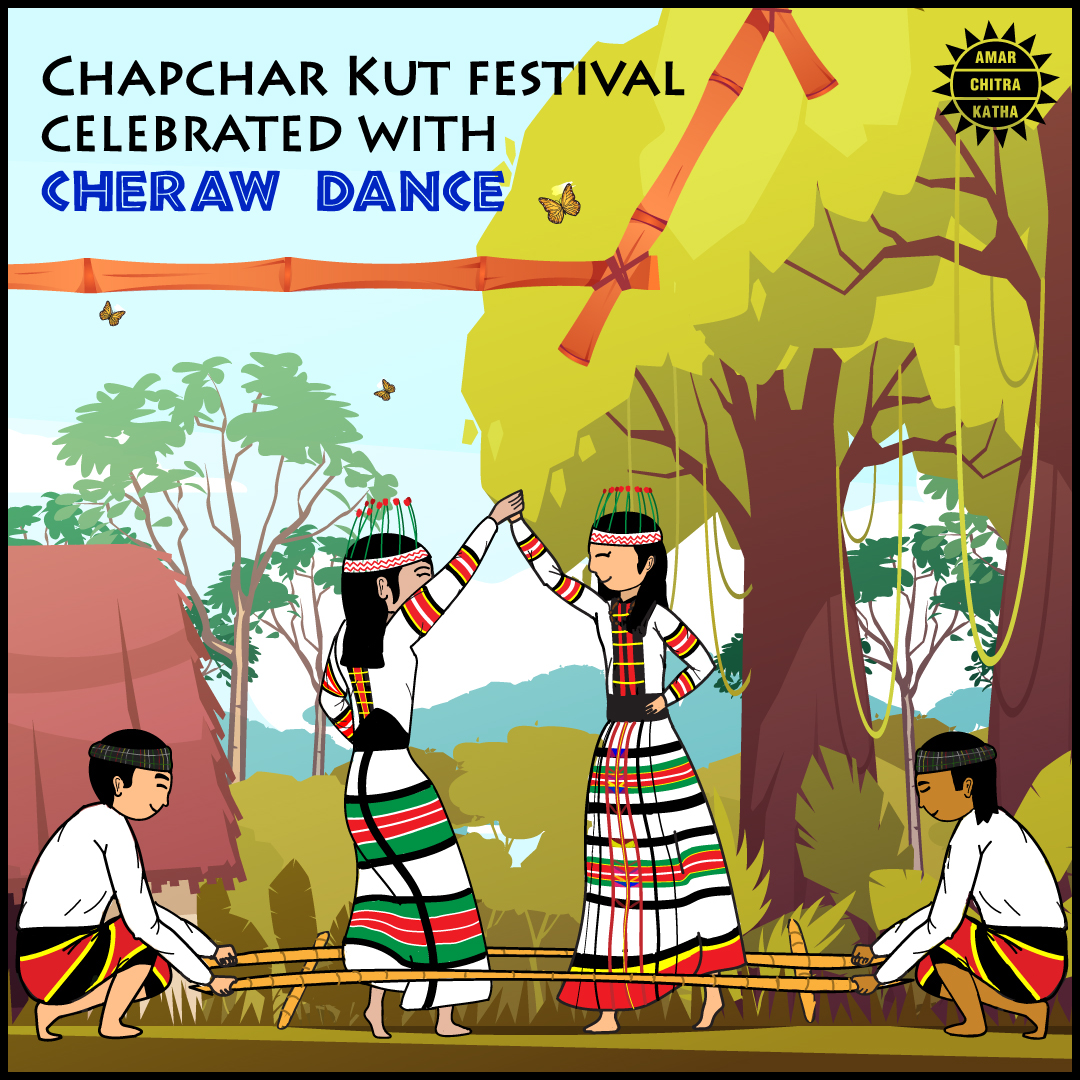Cheraw: The Traditional Bamboo Dance of Mizoram
- March 9, 2021


Cheraw: The Traditional Bamboo Dance of Mizoram
- March 9, 2021
By Mansee Jain

Cheraw or the ‘Bamboo Dance’ is part of the great traditions of Mizoram, characterised by the use of bamboo staves to set the rhythm for the dancers. The dance is believed to have existed since the 1st century C.E. Earlier, it was performed as part of rituals to provide peace to the departed soul of a mother who had left her new-born child. Now, however, the dance is performed on various festive occasions such as the Chapchar Kut, a spring-time festival. The festival is held in March every year, during the period when bamboo trees are cut and left to dry so that they can be burnt to clear the fields for agricultural purposes. The process is also known as ‘jhum’.
The Cheraw performers usually dance in groups of six to eight, though the numbers can vary. Two bamboo staves are placed horizontally on the ground. The male performers, who are in pairs, hold two bamboo staves and clap them against each other and on the floor rhythmically. Meanwhile, the female performers dance and weave in between the bamboos to the rhythm.
To receive more such stories in your Inbox & WhatsApp, Please share your Email and Mobile number.
The dance steps are said to be inspired by the movements seen in nature, such as the swaying of trees and the flight of birds. While the fast and skillful movements of the performers are awe-inspiring, the colourful costumes worn by them add to the beauty of the dance. The women wear a Thihna (necklace), a Vakiria (head-dress made of bamboo and decorated with bright objects such as feathers), a Kawrchei (blouse), and a Puanchei (sarong), both in white, red, green, and black colours. The men wear a bandana and a Mizo shawl.
Cheraw is slowly gaining fame on the international stage. In 2010, the dance form figured in the Guinness Book of World Records. Ten thousand seven hundred and sixty-three people danced together for eight minutes, making it the largest dance ensemble ever on the globe. While only around two thousand dancers could be accommodated in the Assam Rifles field, over eight thousand dancers performed along a three-kilometre stretch of road in Aizawl, the capital city of Mizoram.
Cheraw was also featured during the International Dance Day programme organized by the Church of Scientology in London on 27 April, 2019. The programme promoted art, culture, and empowerment of tribal communities in India. The Garo dance from Meghalaya, Siddi dance from Karnataka, and Pavara dance from Maharashtra were also performed during the event.
It’s heart-warming to find that Cheraw is slowly gaining the recognition it deserves. It is a beautiful art form requiring great skill, dedication, and hard work to master. The bamboo’s rhythmic sounds, occasionally accompanied by gongs and drums, along with the dancers’ grace and synchronization, is a feast for the senses.
To receive more such stories in your Inbox & WhatsApp, Please share your Email and Mobile number.

Comic of The Month
The Naval Journey of India Book I
This book is the first of a three-book series that takes a deep and detailed look at India's Naval History and a deep insight into the lives of our men and women in white. But any series on the Indian Navy has to start at the very beginning - exploring India's celebrated maritime history. Join our little hero, Bharat, and his grandfather, Commodore Sagar, as they sail into the deep blue waters of time. Book I of The Naval Journey of India takes a sweeping look at India's maritime endeavours, how the seas impacted us over millennia and how the oceans made us who we are.